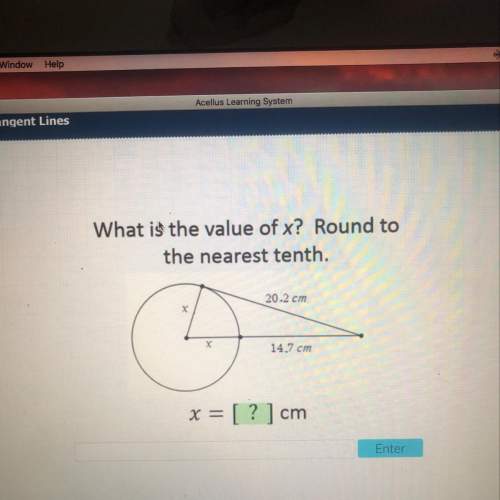
Mathematics, 26.11.2019 19:31, alicat20
Let ∇f=−4xe−x2sin(y)i⃗ +2e−x2cos(y)j⃗ . find the change in f between (0,0) and (1,π/2) in two ways. (a) first, find the change by computing the line integral ∫c∇f⋅dr⃗ , where c is a curve connecting (0,0) and (1,π/2). the simplest curve is the line segment joining these points. parameterize it

Answers: 3
Other questions on the subject: Mathematics



Mathematics, 21.06.2019 19:30, Tcareyoliver
If 2(a^2+b^2)=(a+b)^2 then, > a+b=0, > ab=0, > a=b, > 2a=b
Answers: 1

Mathematics, 21.06.2019 21:00, villanuevajose95
A. s.a.! this is a similarity in right triangles. next (solve for x)a.) 12b.) 5c.) 12.5d.) [tex] 6\sqrt{3} [/tex]
Answers: 2
Do you know the correct answer?
Let ∇f=−4xe−x2sin(y)i⃗ +2e−x2cos(y)j⃗ . find the change in f between (0,0) and (1,π/2) in two ways....
Questions in other subjects:




Mathematics, 01.04.2021 22:40




Mathematics, 01.04.2021 22:40


Mathematics, 01.04.2021 22:40







